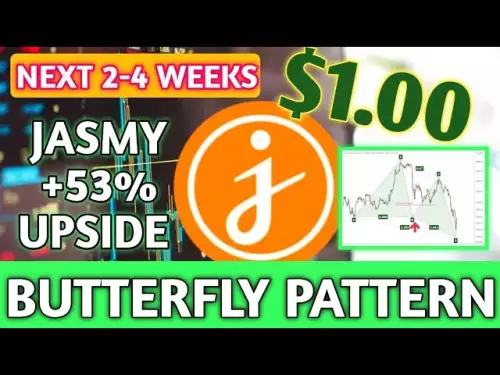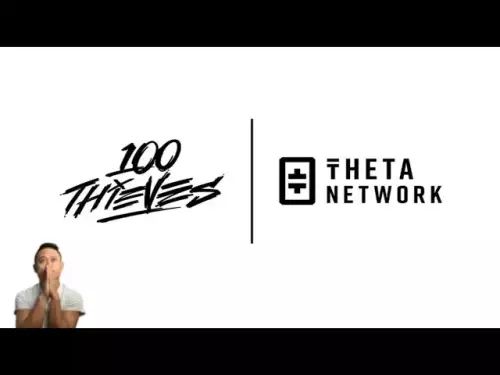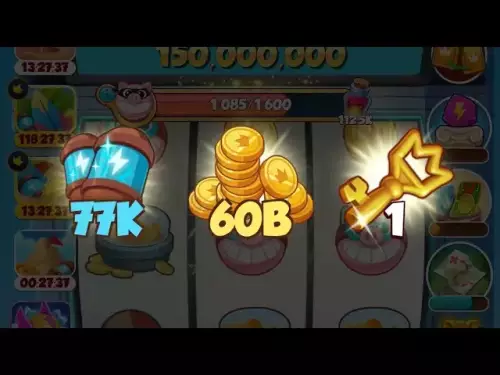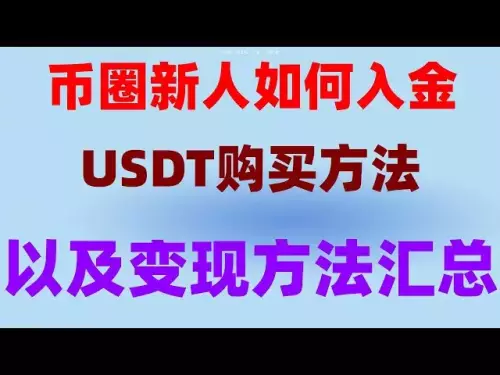-
 Bitcoin
Bitcoin $110200
-2.91% -
 Ethereum
Ethereum $4391
-8.23% -
 XRP
XRP $2.861
-5.69% -
 Tether USDt
Tether USDt $1.000
0.04% -
 BNB
BNB $840.4
-4.16% -
 Solana
Solana $186.9
-9.37% -
 USDC
USDC $1.000
0.05% -
 TRON
TRON $0.3424
-5.32% -
 Dogecoin
Dogecoin $0.2098
-9.85% -
 Cardano
Cardano $0.8379
-8.37% -
 Chainlink
Chainlink $23.40
-9.60% -
 Hyperliquid
Hyperliquid $43.21
-5.88% -
 Ethena USDe
Ethena USDe $1.001
0.03% -
 Stellar
Stellar $0.3846
-6.02% -
 Sui
Sui $3.346
-9.38% -
 Bitcoin Cash
Bitcoin Cash $544.2
-6.96% -
 Avalanche
Avalanche $23.38
-9.45% -
 Hedera
Hedera $0.2305
-7.41% -
 UNUS SED LEO
UNUS SED LEO $9.576
0.23% -
 Litecoin
Litecoin $109.3
-7.93% -
 Toncoin
Toncoin $3.120
-5.49% -
 Shiba Inu
Shiba Inu $0.00001204
-7.54% -
 Uniswap
Uniswap $9.699
-11.47% -
 Polkadot
Polkadot $3.731
-9.38% -
 Dai
Dai $1.000
0.00% -
 Cronos
Cronos $0.1552
-1.20% -
 Bitget Token
Bitget Token $4.481
-4.36% -
 Monero
Monero $265.7
-3.48% -
 Aave
Aave $318.7
-8.62% -
 Ethena
Ethena $0.6215
-10.61%
How to use KDJ on an NFT marketplace chart?
Traders use the KDJ indicator on NFT price data via tools like TradingView to spot overbought/oversold conditions, with %K, %D, and %J lines guiding entry and exit points in volatile markets.
Aug 06, 2025 at 04:35 am
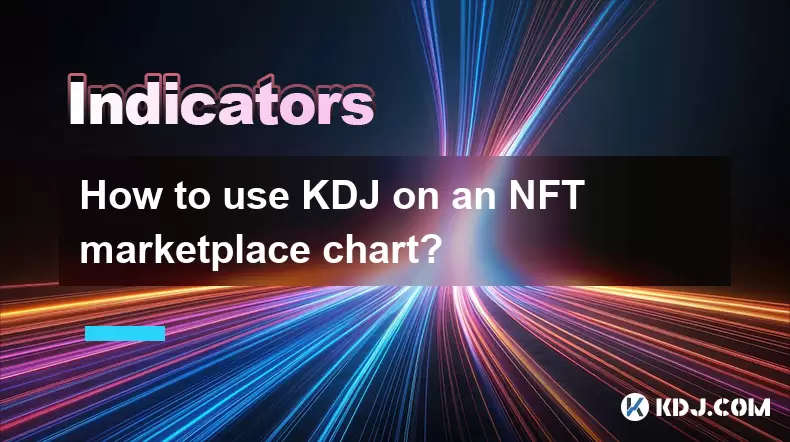
Understanding KDJ in the Context of NFT Marketplaces
The KDJ indicator is a momentum oscillator rooted in the Stochastic Oscillator family, widely used in traditional financial markets and increasingly adopted in cryptocurrency and NFT trading analysis. While NFT marketplaces like OpenSea, Blur, or Magic Eden do not natively support KDJ on their charts, traders often use external tools such as TradingView or custom scripts to overlay technical indicators on price data derived from NFT collections. The KDJ consists of three lines: %K (fast stochastic), %D (slow stochastic, a moving average of %K), and %J (a projection of %K and %D). These lines help identify overbought and oversold conditions, potential trend reversals, and momentum shifts in asset prices.
To apply KDJ effectively, traders must first obtain historical price data for a specific NFT collection. This data is typically aggregated from sales records on the blockchain and compiled by analytics platforms such as CryptoSlam, Dune Analytics, or NFTFloor. Once the data is available in a time-series format (e.g., daily average price), it can be imported into a charting tool that supports custom indicators.
Setting Up KDJ on a Compatible Charting Platform
To use KDJ on an NFT marketplace chart, you must transition from the native interface of the marketplace to a third-party charting solution. The most common platform for this is TradingView. Begin by exporting or sourcing time-series price data for your target NFT collection. Some platforms offer APIs or CSV exports. Once obtained, upload this data into TradingView using the "Import Data" feature under the "Pine Editor" or by creating a custom symbol.
After loading the data:
Open a new chart and select the imported NFT price series.
Click on "Indicators" at the top of the chart.
Search for "Stochastic" in the indicator library.
Select the standard Stochastic indicator, which provides %K and %D lines.
To calculate the %J line, use a custom Pine Script. The formula for %J is:
%J = 3 %D - 2 %K
You can create a new script in Pine Script Editor with the following logic://@version=5
indicator("Custom KDJ", overlay=false)
length = input(14, title="Length")
smoothK = input(3, title="Smooth K")
smoothD = input(3, title="Smooth D")k = sma(stoch(close, high, low, length), smoothK)
d = sma(k, smoothD)
j = 3 d - 2 kplot(k, color=color.green, title="%K")
plot(d, color=color.red, title="%D")
plot(j, color=color.blue, title="%J")Save and apply the script to your chart.
This setup allows you to visualize all three KDJ components and interpret them in the context of NFT price movements.
Interpreting KDJ Signals for NFT Trading
Once the KDJ is plotted, traders can begin analyzing potential entry and exit points. The overbought zone is typically defined as values above 80, suggesting the NFT collection’s price may be due for a correction. Conversely, the oversold zone is below 20, indicating possible undervaluation and a buying opportunity.
Key signal patterns include:
- %K crossing above %D in the oversold region: This is a bullish signal, suggesting upward momentum may begin.
- %K crossing below %D in the overbought region: This indicates bearish momentum and a potential price drop.
- Divergence between price and KDJ: If the NFT’s price makes a new high but the KDJ fails to surpass its previous peak, this bearish divergence may signal weakening momentum.
- Extreme %J values: When %J exceeds 100 or drops below 0, it indicates extreme momentum, often preceding a reversal.
Because NFT prices are less liquid and more volatile than traditional assets, these signals should be used alongside volume data and on-chain metrics such as mint activity or wallet concentration.
Adjusting KDJ Parameters for NFT Volatility
Standard KDJ settings (14, 3, 3) may not suit the erratic price behavior of NFTs. Due to low trading frequency and large price swings, it is advisable to customize the lookback period and smoothing factors. For highly volatile collections, consider reducing the length to 7 or 9 to increase sensitivity. For blue-chip NFTs with steadier trends, a longer period like 21 may filter out noise.
To modify the parameters:
- In the Pine Script editor, locate the
length,smoothK, andsmoothDinput variables. - Adjust
lengthto reflect the number of days over which to calculate the stochastic base. - Increase
smoothKto reduce false signals in choppy markets. - Experiment with
smoothDto control the responsiveness of the %D line.
After adjusting, save the script and reapply it. Observe how the KDJ lines react to past price movements. Backtesting manually by comparing historical sales data with KDJ crossovers can help validate the effectiveness of your settings.
Combining KDJ with Other NFT-Specific Metrics
Relying solely on KDJ can lead to misleading signals due to the unique nature of NFT markets. It is essential to correlate KDJ readings with complementary data sources. For example:
- Floor price trends: A rising floor price combined with a bullish KDJ crossover strengthens the buy signal.
- Trading volume spikes: Increased volume during a KDJ crossover confirms market participation.
- Whale wallet activity: Use blockchain explorers like Etherscan or Solana Explorer to monitor large purchases that may influence price.
- Listings and rarity tools: A sudden increase in rare trait listings may precede a price drop, even if KDJ suggests oversold conditions.
Platforms like Nansen or Arkham Intelligence can help track smart money movements. Overlaying this intelligence with KDJ signals creates a more robust decision-making framework.
Frequently Asked Questions
Can KDJ be used for mint timing on new NFT projects?
While KDJ relies on historical price data, new mints lack sufficient sales history for accurate calculation. However, after a few days of secondary market trading, once enough transactions exist to form a price series, KDJ can be applied. Early mint decisions should instead rely on community sentiment, whitelist access, and project fundamentals.
Why does KDJ give false signals on some NFT charts?
NFTs often experience low liquidity and irregular trading, leading to price gaps and thin data. This causes KDJ to generate premature crossovers or extended overbought/oversold readings. Smoothing the input data or increasing the lookback period can reduce noise.
Is KDJ applicable to non-fungible tokens priced in ETH versus USD?
Yes, but the choice of pricing affects interpretation. Using ETH-denominated prices removes USD volatility from the equation, making KDJ reflect pure NFT demand. USD pricing includes ETH market swings, which may distort signals. Choose based on whether you're hedging against crypto market movements.
How often should I update the NFT price data for KDJ accuracy?
For daily analysis, update the dataset once per day after market close (UTC). For intraday tracking, use hourly aggregations if sufficient trades occur. Always verify data freshness, as delayed or missing sales can skew %K and %D calculations. Automation via API integration ensures consistency.
Disclaimer:info@kdj.com
The information provided is not trading advice. kdj.com does not assume any responsibility for any investments made based on the information provided in this article. Cryptocurrencies are highly volatile and it is highly recommended that you invest with caution after thorough research!
If you believe that the content used on this website infringes your copyright, please contact us immediately (info@kdj.com) and we will delete it promptly.
- Heritage Distilling's Token Deal: A Bold Balance Sheet Strategy
- 2025-08-26 06:45:14
- Coinbase Hack, Solana Shenanigans, and Wallet Woes: What's a Crypto OG to Do?
- 2025-08-26 06:45:14
- Bitcoin Price, Cardano, Layer Brett: What's the Haps?
- 2025-08-26 05:30:13
- MicroStrategy's Bitcoin Bet: A NYC Perspective
- 2025-08-26 07:05:13
- UAE's Bitcoin Bonanza: From Mining Hub to Crypto Powerhouse
- 2025-08-26 06:10:13
- Ethereum, Liquidations, and Bitcoin: A Crypto Market Rollercoaster
- 2025-08-26 05:45:13
Related knowledge
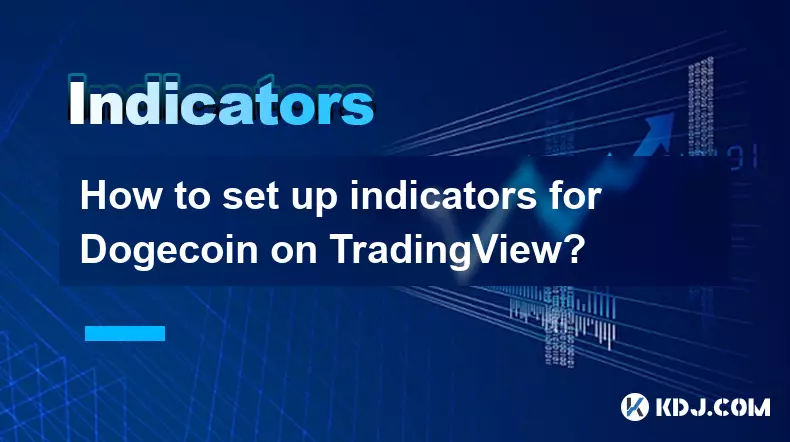
How to set up indicators for Dogecoin on TradingView?
Aug 25,2025 at 04:23pm
Understanding Dogecoin and TradingView1. Dogecoin, initially created as a meme-based cryptocurrency, has evolved into a widely traded digital asset. I...

What does it mean when the +DI and -DI cross frequently in the DMI indicator but the ADX is flattening?
Aug 11,2025 at 03:15am
Understanding the DMI Indicator ComponentsThe Directional Movement Index (DMI) is a technical analysis tool composed of three lines: the +DI (Positive...

What does the sudden appearance of a "dark cloud cover" candlestick pattern during an uptrend indicate?
Aug 13,2025 at 11:35am
Understanding the 'Dark Cloud Cover' Candlestick PatternThe dark cloud cover is a bearish reversal pattern in technical analysis that typically appear...

What does it mean when the moving average, MACD, and RSI all send buy signals simultaneously?
Aug 11,2025 at 01:42pm
Understanding the Convergence of Technical IndicatorsWhen the moving average, MACD, and RSI all generate buy signals at the same time, traders interpr...

What does it mean when both the KDJ indicator and the RSI show overbought signals simultaneously?
Aug 13,2025 at 11:35am
Understanding the KDJ Indicator in Cryptocurrency TradingThe KDJ indicator is a momentum oscillator derived from the Stochastic Oscillator, widely use...

What does it mean when the price is trading above the SAR indicator but the red dots are densely packed?
Aug 09,2025 at 11:49pm
Understanding the SAR Indicator and Its Visual SignalsThe SAR (Parabolic Stop and Reverse) indicator is a technical analysis tool used primarily to de...

How to set up indicators for Dogecoin on TradingView?
Aug 25,2025 at 04:23pm
Understanding Dogecoin and TradingView1. Dogecoin, initially created as a meme-based cryptocurrency, has evolved into a widely traded digital asset. I...

What does it mean when the +DI and -DI cross frequently in the DMI indicator but the ADX is flattening?
Aug 11,2025 at 03:15am
Understanding the DMI Indicator ComponentsThe Directional Movement Index (DMI) is a technical analysis tool composed of three lines: the +DI (Positive...

What does the sudden appearance of a "dark cloud cover" candlestick pattern during an uptrend indicate?
Aug 13,2025 at 11:35am
Understanding the 'Dark Cloud Cover' Candlestick PatternThe dark cloud cover is a bearish reversal pattern in technical analysis that typically appear...

What does it mean when the moving average, MACD, and RSI all send buy signals simultaneously?
Aug 11,2025 at 01:42pm
Understanding the Convergence of Technical IndicatorsWhen the moving average, MACD, and RSI all generate buy signals at the same time, traders interpr...

What does it mean when both the KDJ indicator and the RSI show overbought signals simultaneously?
Aug 13,2025 at 11:35am
Understanding the KDJ Indicator in Cryptocurrency TradingThe KDJ indicator is a momentum oscillator derived from the Stochastic Oscillator, widely use...

What does it mean when the price is trading above the SAR indicator but the red dots are densely packed?
Aug 09,2025 at 11:49pm
Understanding the SAR Indicator and Its Visual SignalsThe SAR (Parabolic Stop and Reverse) indicator is a technical analysis tool used primarily to de...
See all articles





















